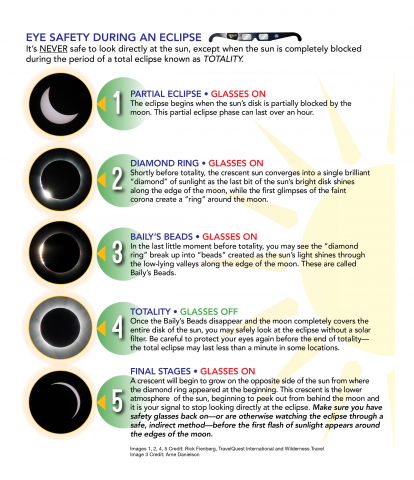
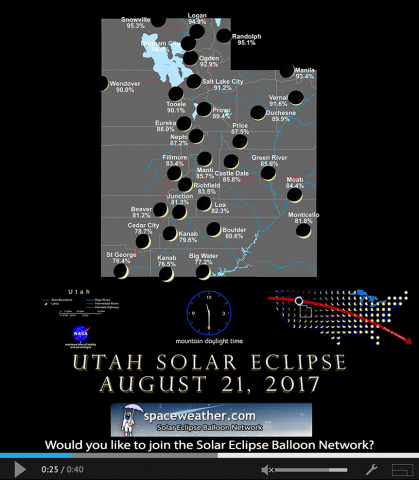
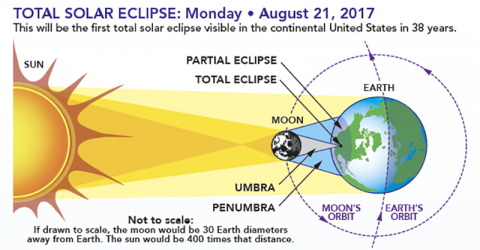
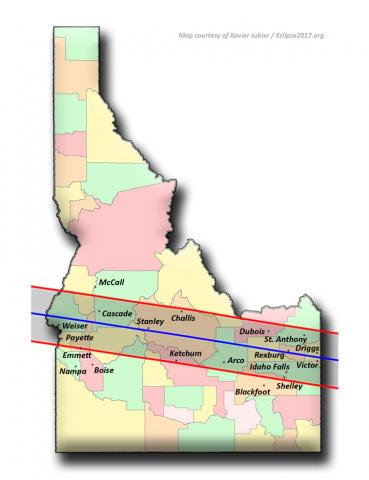
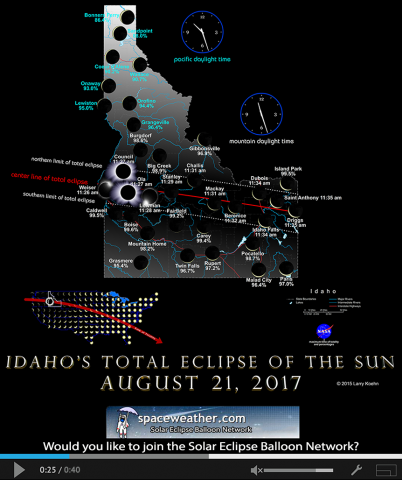
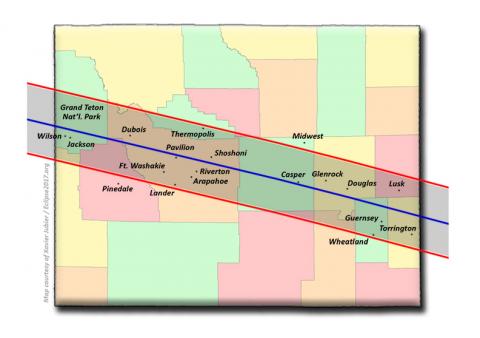
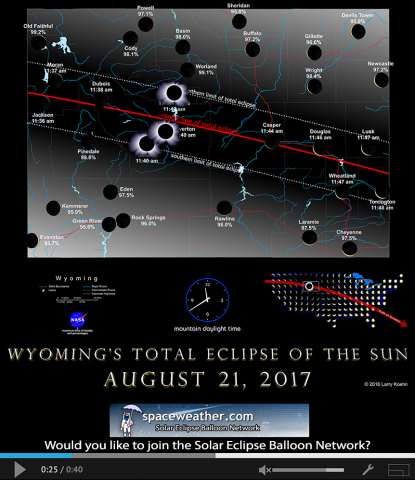
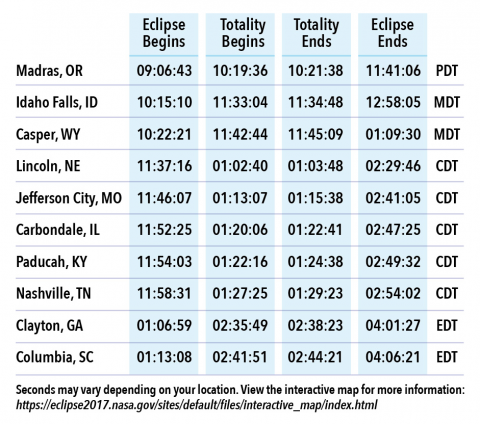
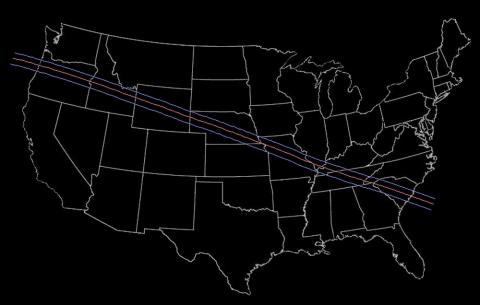
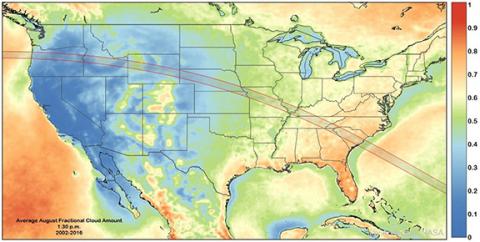

On Monday, August 21, 2017, all of North America will be the host to an eclipse of the sun. Anyone within the path of totality can see one of nature’s most awe-inspiring sights - a total solar eclipse. This path, where the moon will completely cover the sun will stretch from Lincoln Beach, Oregon to Charleston, South Carolina. Observers outside this path will still see a partial solar eclipse where the moon covers part of the sun's disk.
People within the path of totality, weather permitting, will be able to watch the moon pass in front of the sun and eventually block out its light. At this point, the sky will go dark for approximately two-and-a-half minutes. The total solar eclipse will go through 10 states: Oregon, Idaho, Wyoming, Nebraska, Missouri, Illinois, Kentucky, Tennessee, North Carolina and South Carolina. The start of the eclipse begins just over an hour before.
There will be several eclipses that pass over the US in the 21st century. The total eclipse in 2024 will also be visible from Mexico and Canada. The first total solar eclipse since 1979 will cross the continental United States on August 21, 2017, when the shadow of the moon sweeps across the earth, travelling from the North Pacific, south of the Aleutian Islands, to the Eastern Atlantic near the Cape Verde Islands in a little over three hours. After a 38-year eclipse drought, everyone is hoping for great weather, cloud free and smoke free to enjoy this event.
This eclipse arrives at a good time: the summer thunderstorm season is winding down and retreating southward; the Arizona monsoon is breaking; and the storm-carrying jet stream has not yet begun its journey southward from Canada. The dry and generally sunny fall season is about to begin. The best climatological prospects for a sunny day are found in the West and Midwest.
A few facts about the Total Eclipse
· Shadow bands: The sunlight filtering around the advancing bands of light and dark on the ground.
· The amount of time it will take for the eclipse to go across the entire continent is 90 minutes.
· 2 minutes and 40 seconds is the longest anyone, anywhere will be able to see the totality is in Hopkinsville, Kentucky.
· 99 years is how long the previous coast-to-coast solar eclipse was seen in the USA.
· Follow the stripe, unlike most other total eclipse, the 2017 eclipse will cross directly overhead, or nearby, many major population areas.
· Baily’s Beads, during the total eclipse, as light from the sun is blocked, these points of light begin to appear as sunlight streams through the valleys of the moon’s horizon
· Solar Corona, this aura of gases that surrounds the sun and shoots out into space for millions of miles is visible to the unaided eye as a brilliant, glowing halo during the total eclipse
· We are the only planet in our solar system where a moon and our sun have the same apparent sizes in the sky
· Your pet may be confused in the darkness of the total eclipse, some animals and insects get restless and confused.
· Protect your eyes, used protective viewing glasses.
· Super speed, the moon’s shadow races across the Earth so fast, you’d have to fly at least 1.5 times the speed of sound to keep up with it
· Temperatures drop during a solar eclipse, you can expect the temperature to drop about 10 degrees
Everyone should try and see this eclipse of the area. Check out the pictures and chart on how much you will see and when.